The following article was contributed by Team Silver Sea.
In our previous articles, we have laid bare the concepts of the Field, the Zones, the types of cards and monsters. In today’s article, we present the final basic concept, and perhaps the most important of all: Battling and Victory. Everyone wants to win at Yu-Gi-Oh!, but how do you do that? In fact, there is no singular way to achieve victory! We will highlight the different ways a player can win in a typical Yu-Gi-Oh game in this article.
Standard Victory Condition
 Under typical conditions, there are two ways to achieve victory:
Under typical conditions, there are two ways to achieve victory:
- Reducing your opponent’s life points (LP) to zero
- Deck out
Reducing your opponent’s LP to zero is by far the most common method of victory. This LP reduction is either achieved through “burn” effects (where card effects reduce your opponent’s LP) or more commonly, through Monster Battles, discussed later.
Decking out, on the other hand, is a more unorthodox way of victory, but not uncommon. Decking out refers to the situation where your opponent has to draw a card (either through a card effect, or during the Draw Phase) and is unable to do so, because there are no cards left in their Main Deck. This results in an automatic loss.
On the other hand (pun intended), in competitive matches, one can lose a game through using up the time limit, or a Game Loss penalty, issued by a Judge. In fact, this penalty was what caused Shunsuke Hiyama, a Japanese player and the previous World Champion to lose and be disqualified this year.

Here on it gets trickier. If the time limit runs out, but both players still have the same amount of LP, a Sudden Death occurs. The first player to incur LP damage wins the round.
Generally, Yu-Gi-Oh matches are played as a best-of-3 rounds, with the player winning two rounds winning the match. It is actually important to note the distinction between rounds and match. In fact, Konami has released a series of cards known as “Match Winners”, with wording that may confuse the casual reader. For example, shown below is Victory Dragon, perhaps the most infamous Match Winner.
Many people are confused by the last sentence of this card, “If this card attacks your opponent directly and reduces their Life Points to 0, you win the Match”. Some feel the description is redundant, but therein lies the difference. The effect of this card allows the player to directly win the Match in one Round, instead of playing two Rounds. So it is important to note the difference between Rounds and Matches, and it is because of this effect Match Winners are Forbidden in play.
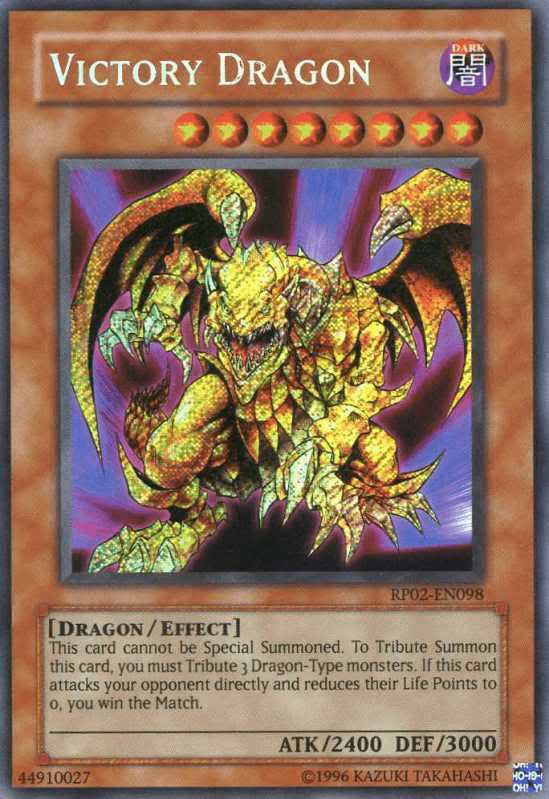
Alternate Victory Conditions
Unfortunately, not all victories are as cut-and-dry as the methods listed above. Throughout Yu-Gi-Oh’s long history, Konami has released several cards that provide players with alternate ways to achieve victory. They are listed below:
Exodia the Forbidden One
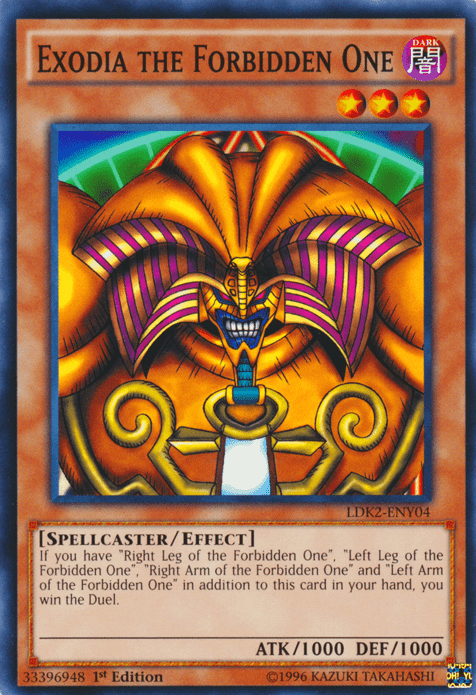
Perhaps the most famous Duel Winner card, if a player has the Arms and Legs of the Forbidden One along with this card, they automatically win the duel.
Destiny Board
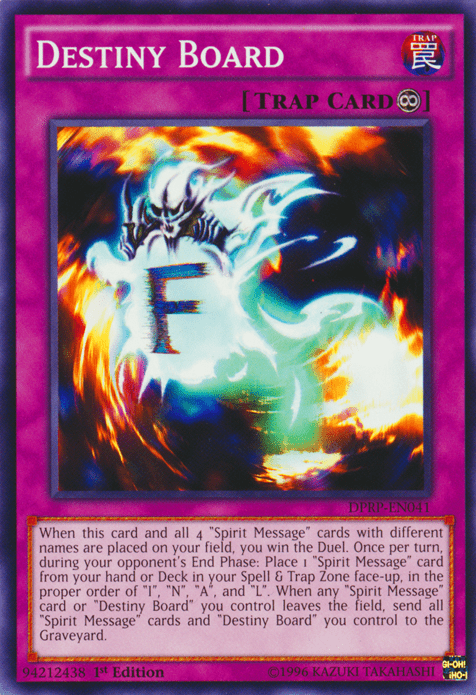
The player can place 1 Spirit Message card from either your hand or Deck to your field at the end of each of your opponent’s turn in the order of I, N, A, L (E, A, T, H in Japanese). If all 5 cards are on the field, you win the duel.
Final Countdown
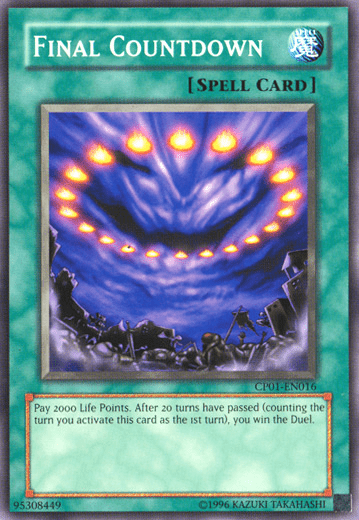
By giving a cost of 2000 LP, the player wins after 20 Turns.
Vennominaga the Deity of Poisonous Snakes
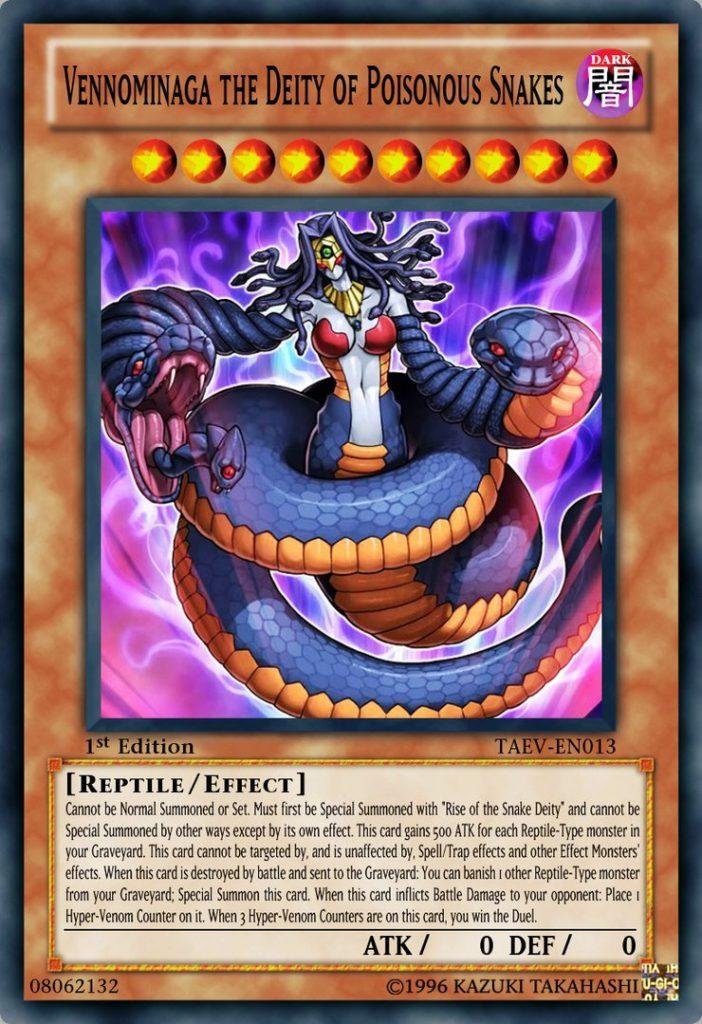
This card gains a Hyper-Venom Counter each time it inflicts Battle Damage to your opponent. If this card has 3 Hyper-Venom Counters on it you win the Duel.
Exodius the Ultimate Forbidden Lord
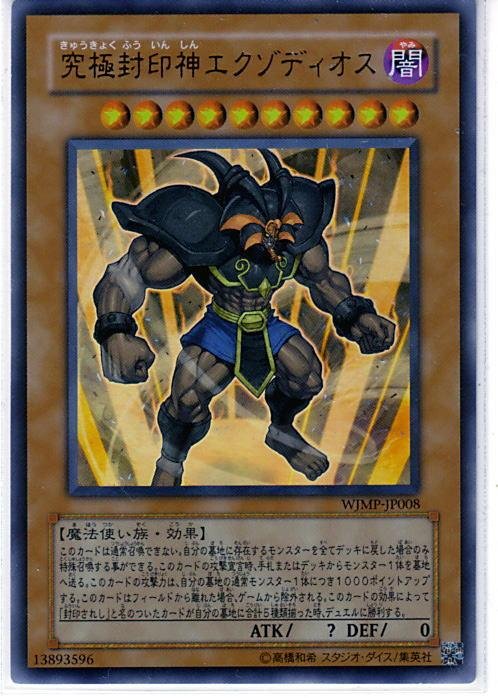
This card sends 1 monster to the Graveyard from your hand or Deck every time it attacks. If five different Forbidden One monsters are sent through this effect, you win the duel.
Holactie the Creator of Light
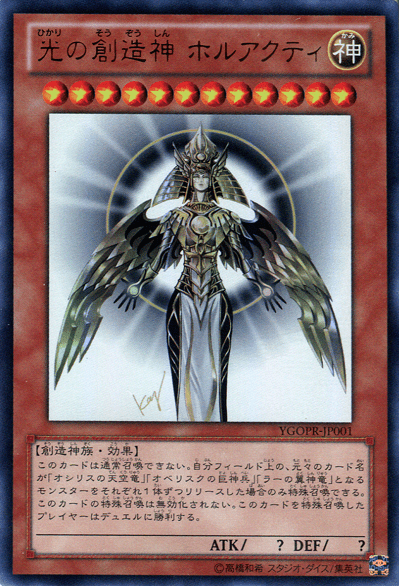
When this card is summoned you win the duel. The only way to summon this card is by tributing the 3 God Cards. The summoning of this card cannot be negated. This card is limited to 1000 pieces internationally.
Number 88: Gimmick Puppet of Leo
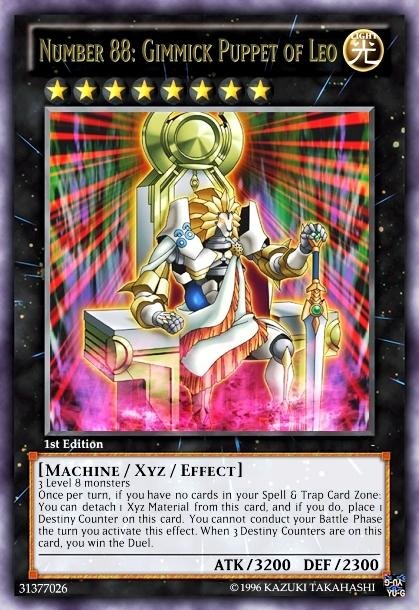
If you have no cards in your Spell and Trap Zone AND skip your own Battle Phase, this card can gain a Destiny Counter by detaching an Xyz Material. If this card has three Destiny Counters on it you win the Duel.
Number C88: Gimmick Puppet Disaster Leo
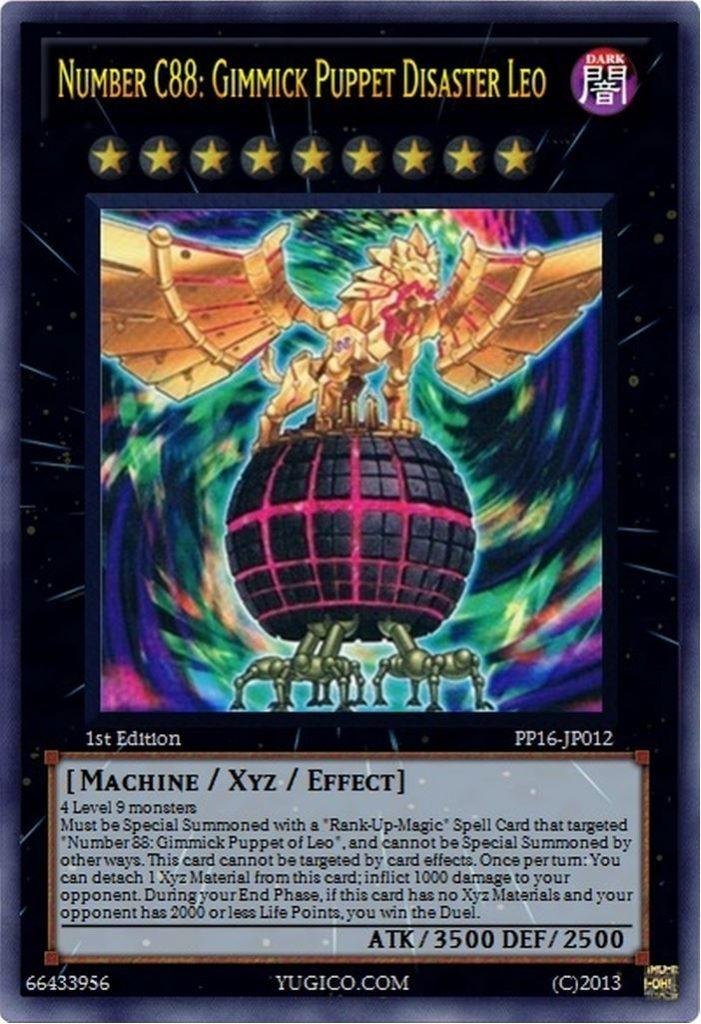
Once per turn you can detach an Xyz Material and inflict 1000 damage to the opponent. During your End Phase, if this card has no Xyz Materials while the opponent has 2000 or fewer LP, you win the Duel.
Jackpot 7
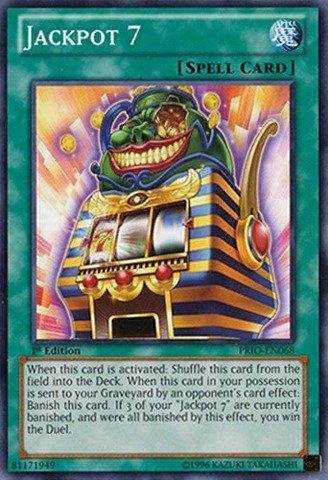
This card banishes itself when sent to the Graveyard by your opponent’s card effect. When three Jackpot 7 are banished by this effect you win the Duel.
Ghostrick Angel of Mischief

Once per turn you can attach a Ghostrick card in your hand to this card as an Xyz Material. When this card has 10 or more Xyz Materials, you win the Duel.
Phantasm Spiral Assault
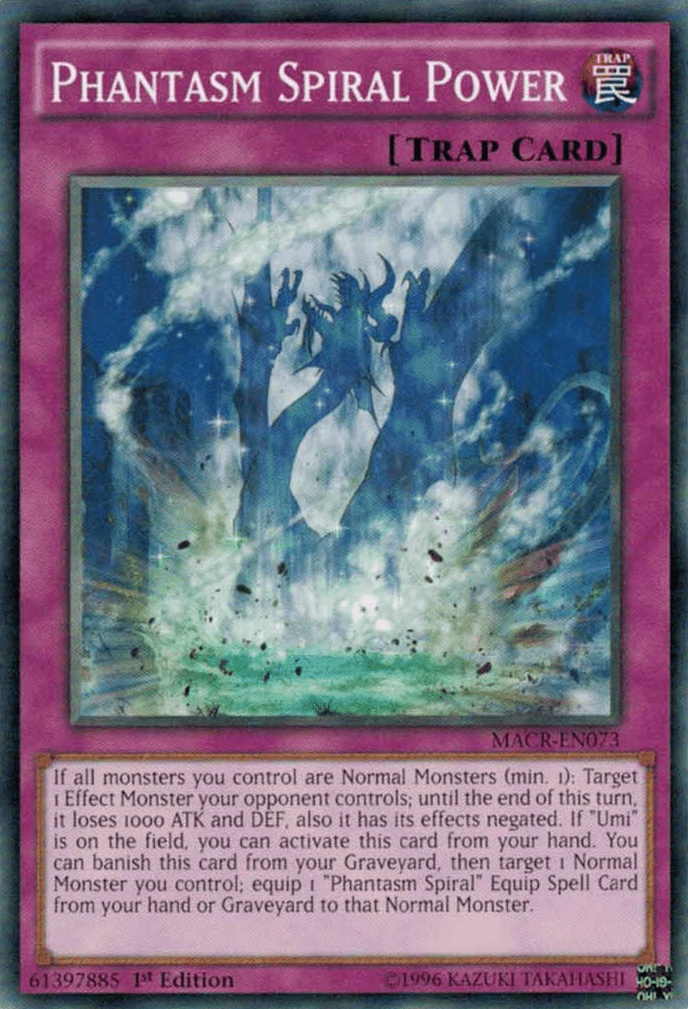
Target a Phantasm Spiral Dragon you control, and if it destroys 3 of your opponent’s Effect Monsters while equipped each time with 3 or more Phantasm Spiral Equip Spell with different names, you win the Duel
Monster Battles:
The main point of Monsters in Yu-Gi-Oh is to battle them. A summoned Monster on your field essentially acts as either a sword or a shield to protect your own LP while reducing your opponent’s LP.
As mentioned before, Monsters have both an Attack value and (except for Link Monsters) a Defense Value. A Monster in Attack Position (Upright) uses the ATK value for battle calculations, as shown below:

Blue-Eyes White Dragon is summoned in Attack Position (vertically). When it undergoes Battle, the ATK value is taken into consideration. In this case, Dark Magician is summoned in Defense Position. When it undergoes Battle, its DEF value is taken into account.
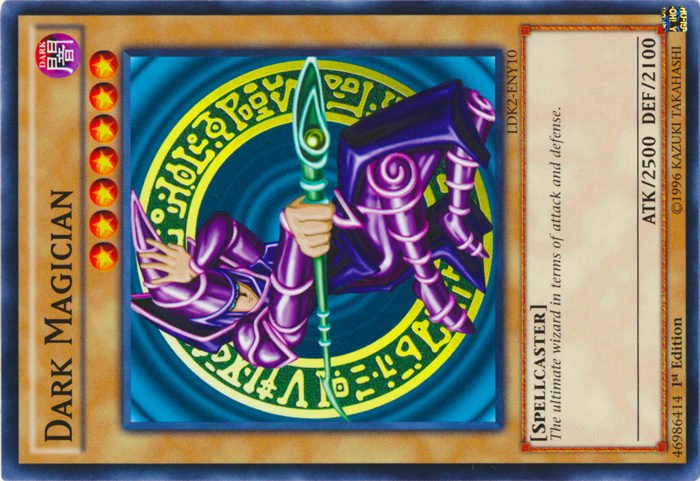
So, what will happen if both of these cards battle? As BEWD is in Attack Position and DM is in Defense Position, we compare the values. BEWD has an ATK of 3000, and DM has a DEF of 2100. As 3000 > 2100, DM is destroyed. But since it is in Defense Position, the player does not take any damage. On the other hand, if both cards are in Attack Position as below, a completely different story unfolds!


In this case, DM’s Attack value of 2500 is taken into consideration instead. As 2500<3000, BEWD destroys DM, and the remainder (3000-2500=500 LP) is taken as damage to the LP of DM’s controller.
In the event where only one side controls monsters and the monsters attack the opponent, this is referred to as a Direct Attack! For example, if BEWD Direct Attacks the opponent, the entirety of its ATK value, 3000 is taken as direct damage to the LP. Hence, if the opponent has an LP of 3000 or lower, it is reduced to 0 and BEWD’s controller wins the Duel.
And there you have it! In our five articles, we’ve introduced the basics of Yu-Gi-Oh, both for new players and for returning players. In our next article, we will be moving on to discussing the current meta-game and trends for Yu-Gi-Oh!












